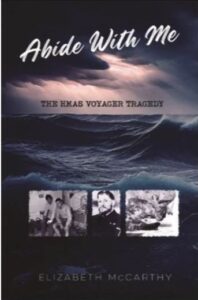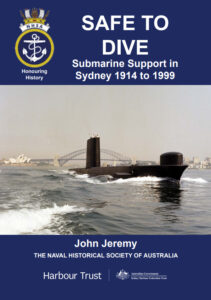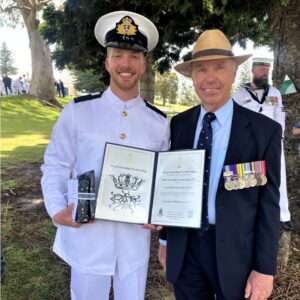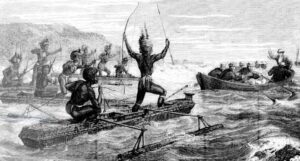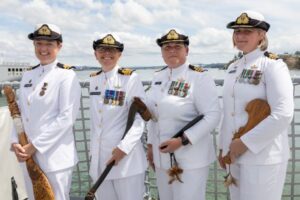Abide With Me – The HMAS Voyager Tragedy by Elizabeth McCarthy This year marks the sixtieth anniversary of the collision between HMAS Melbourne and HMAS Voyager off the New South ...
Naval Historical Review
Book Review: “Safe to Dive – Submarine Support in Sydney 1914 to 1999”
“Safe to Dive – Submarine Support in Sydney 1914 to 1999” by John Jeremy was published by The Naval Historical Society of Australia in 2023, under licence agreement with the ...
Letter: The Big Guns of Tarawa
I’m reading the latest NHR after having read the latest CTH and Buzz, and the Occasional Papers/articles, and they’re all excellent – of a high standard and an enjoyable read, ...
The Rapid Wartime Growth in Royal Australian Navy Shore Establishments
On Monday, 17 September 1945, the Cairns Post newspaper featured a lengthy coverage of the RAN’s shore establishments. This illuminating summary is reproduced below. How many of us can now ...
New Entry Officers’ Course Essays
In 1985 the Naval Historical Society (NHS) first donated an essay prize to the college. The prize consisted of a one-year subscription to the Society and a six-volume bound collection ...
Irregular Warfare in the Royal Australian Navy
By MIDN C.A.F. Cumberlidge RAN MIDN Christopher Cumberlidge hails from the Sunshine Coast and already has a nursing degree. However, he is changing stream as he has a keen interest ...
Education News
The following article is taken from The Australian Naval Architect Vol 27 No 1, February 2023 and is reproduced by kind permission of that organisation. The first student in naval ...
Our First Patrol Boats – Part 2
By Walter Burroughs The December 2022 edition of this magazine contained an article Our First Patrol Boats concerning a class of five topsail schooners built in Sydney in the 1870s, ...
Women Leaders in the Royal New Zealand Navy
The following article stems from a press release issued by the New Zealand Department of Defence on 8 March 2023. The attached photo and explanation have been kindly supplied by ...
Tristan da Cunha and a Tribute to John Smith
The Naval Historical Society is an association of individuals bound together by a love of the navy. Occasionally a member of this band of brothers and sisters stands out from ...
